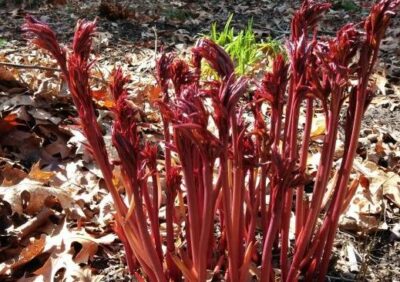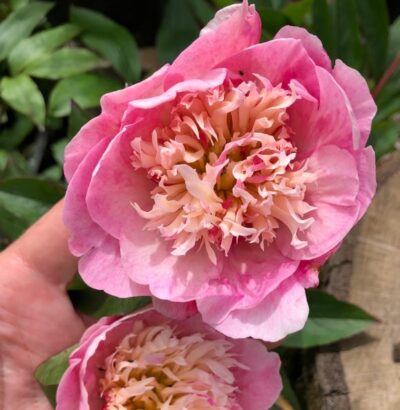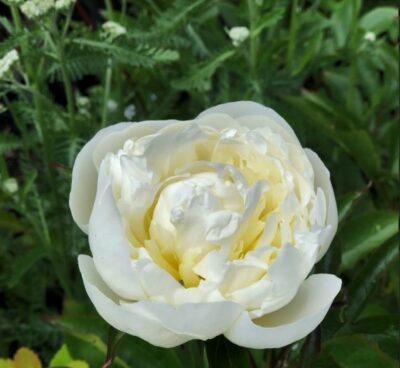Peonies are some of the most stunning flowers in the spring garden. I mean, who doesn’t love a peony?
They make wonderful low-maintenance landscape plants, in addition to being some of the most popular cut flowers. Did you know that they also have medicinal properties? Bonus!

Peonies in a mixed bouquet
There are 3 different types of peonies: herbaceous peonies (Paeonia officinalis and Paeonia lactiflora) which are the ones most commonly found in nurseries; tree peonies (Paeonia suffruticosa); and Itoh or Intersectional peonies (which are a cross between herbaceous and tree peonies).
There are early, mid and late season blooming varieties. Having a few of each will give you the longest show of blooms.
Peonies can be planted in the spring but fall is the ideal time to plant peonies. Peonies thrive in well-drained soil, rich in organic matter in zones 3-8. Plant them in an area where they will get sun for most of the day and will be protected form harsh winds.
Peonies do best when they are not crowded and forced to compete for water and nutrients with other plants. They also resent being transplanted so choose your location carefully.

Peony new growth in spring
Peonies can be purchased as bare root in the fall or as potted plants any time of year. If planting a bare root peony, plant with “eyes” facing up only about and inch or two under the soil. If planting a potted peony, plant with soil level the same as it is in the pot. A peony that does not bloom may be planted too deeply.

Paeonia lactiflora ‘Do Tell’, early to mid-season
These tips will get your peonies ready for fall and winter so they will get off to the best start in the spring
- Once the foliage starts to turn yellow and die back, use clean pruners to remove all of the old foliage and stems to the soil level. Throw the away the foliage and old stems, rather than composting them, as they may carry blights or fungus that can survive in soil through the winter.
- Clean up the area around the crown of the plant and make sure it is clear of any spent blooms or dead plant material. Note that unlike herbaceous and Itoh peonies, tree peonies should not be cut to the ground. You can remove spent blooms and dead branches in the fall but wait until spring to prune tree peonies.

Paeonia lactiflora ‘Festiva Maxima’, mid season
- If you live in an area that gets very harsh winters apply a 1-2″ layer of organic mulch (such as compost, straw/hay or bark) over the crown of the plant. You can apply an organic fertilizer at this time as well.
- Transplanting and/or dividing established peonies is best done in the fall. If you plan on dividing some of your established peonies, aim to get 3-5 eyes per division. Since peonies don’t like being divided or transplanted it may take a few years for your peonies to recover and bloom as prolifically as they did before.
- If you are growing peonies for cut flower production you may want to disbud your peonies for the first couple of years, which gives the plant more energy for root production, rather than that energy being spent on forming flowers.
- Ensure that your newly planted or divided peonies get adequate water for at least the first year or until they are well established. Once established they will only need supplemental water in very dry and hot summers.

Itoh Peonly ‘Bartzella’, mid to late season
Peonies require little maintenance throughout the year making them a great plant for the low maintenance gardener.
Follow these few tips and your peonies will reward you with beautiful blooms year after year!
Questions? Leave them in the comments below!
Heidi








Leave A Comment